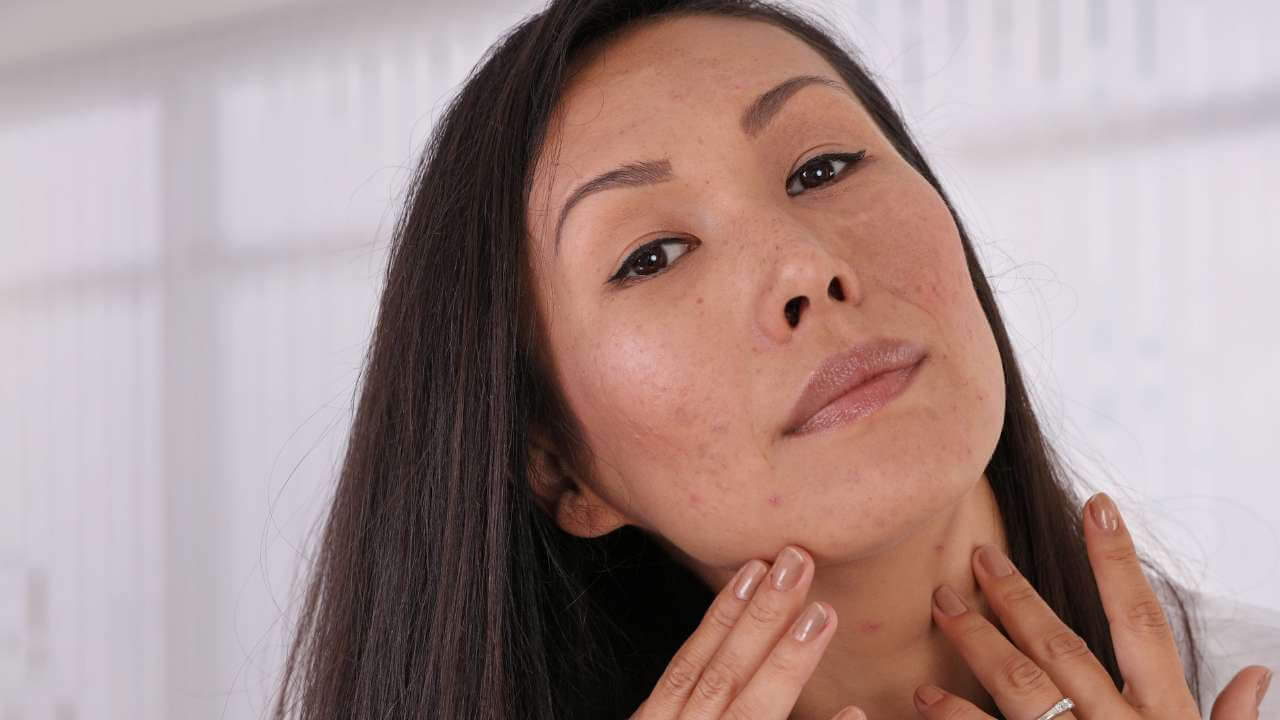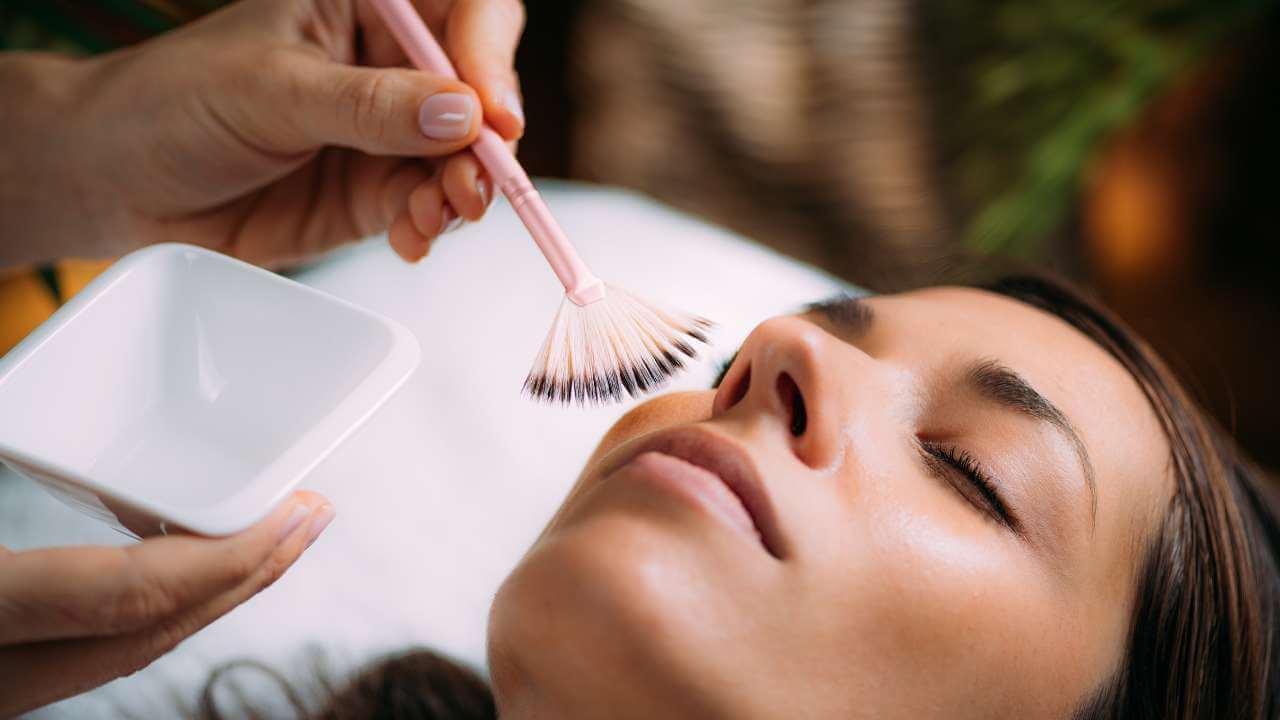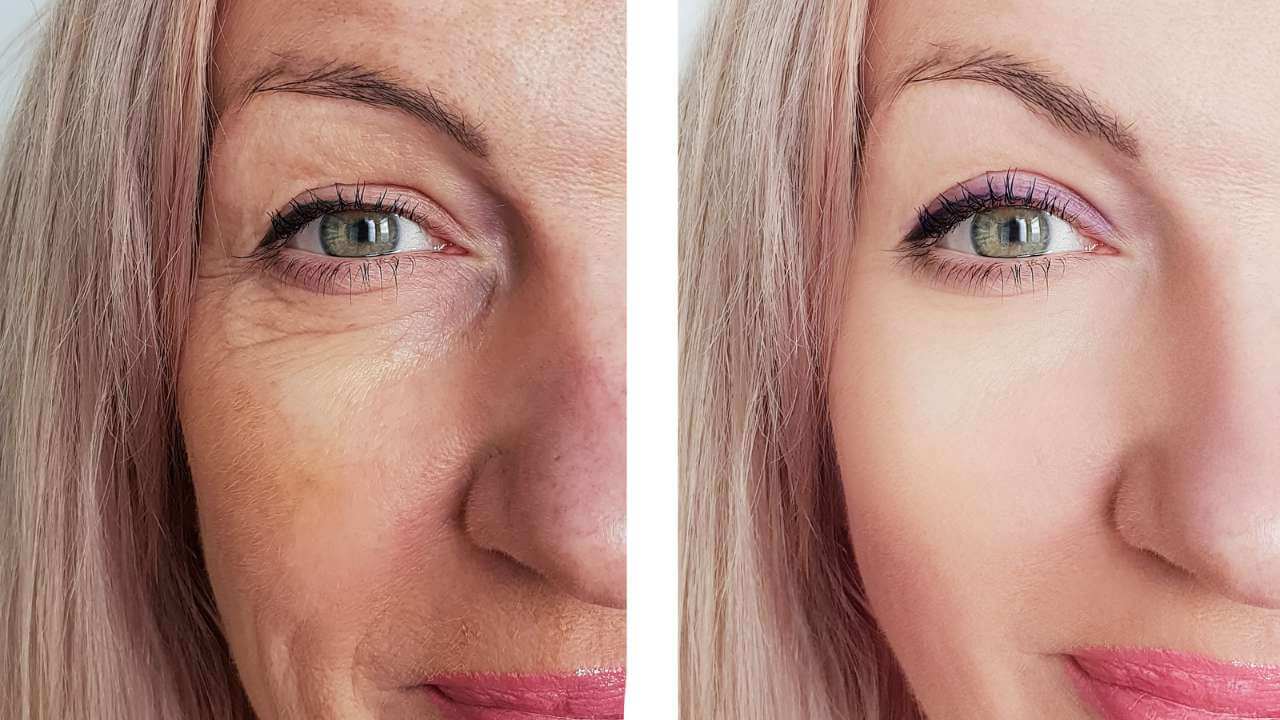Are you tired of feeling self-conscious about dark spots on your skin? Do you want to banish post-inflammatory hyperpigmentation for good? You're not alone!
Many darker skinned individuals struggle with pigmentation disorders, caused by an inflammatory process in the skin that leads to discoloration. But don't worry, some simple solutions can help you achieve a brighter, more even complexion.
In this article, we'll take you through a step-by-step process to get rid of post-inflammatory hyperpigmentation once and for all. From understanding the causes to exploring the most effective treatments, we've got you covered.
So sit back, grab a cup of tea, and get ready to say goodbye to dark spots and hello to radiant, natural skin tone!
What is Post-Inflammatory Hyperpigmentation?
Have you ever noticed post acne marks on your skin that seem to linger long after a pimple has healed? Well, this is called post-inflammatory hyperpigmentation (PIH), or hypermelanosis.[1] This type of hyperpigmentation happens when your skin's pigment cells respond to inflammation by increasing melanin production, causing dark marks and uneven skin tone.
Inflammation can also damage cells in the deeper papillary dermis layer of your skin, which can release more melanin pigment and cause a blue-gray discoloration that may be permanent. However, if the dark patches are limited to the surface layer of your skin caused by the use of birth control pills, commonly seen in a skin condition known as melasma, there's a higher chance they'll respond to topical treatment and fade over time.

Causes of Post-Inflammatory Hyperpigmentation?
In this section, we'll explore the various factors that can trigger this condition, from common skin irritations like acne and eczema to medical and cosmetic dermatology procedures. Understanding the underlying causes of PIH is key to effectively treating and preventing it in the future.
Some of the most common causes of postinflammatory hyperpigmentation include:
- Acne: When acne lesions heal, they can leave behind dark patches of hyperpigmentation or post acne marks.
- Eczema: This skin condition often referred to as atopic dermatitis can cause inflammation and itching, which can lead to PIH. See our complete guide on eczema dark skin discoloration for more information, including the different types of Eczema and how to manage this condition.
- Infections: Bacterial, viral, and fungal infections can all trigger PIH and lead to more serious skin problems.
- Insect Bites: Mosquitoes, spiders, and other insect bites can cause allergic reactions and leave behind dark marks or patches on the skin.
- Burns: Burns can cause inflammation and damage to the skin, leading to PIH.
- Razor Bumps: Shaving the legs with a dull razor or without a good moisturizing shaving cream can cause skin irritation and inflammation known as “strawberry legs” which can lead to PIH.
- Rashes: Allergic reactions or other types of rashes can also lead to various skin problems including postinflammatory hyperpigmentation.
- Psoriasis: This chronic skin condition can cause inflammation and scaling, leading to PIH. While psoriasis can appear anywhere on the body, it normally causes dark knees and elbows, as well as dry skin lesions on the scalp and lower back.
- Impetigo: A highly contagious skin infection, impetigo can result in dark spots or patches when the sores heal. Other causes of this skin infection also include acne vulgaris and atopic dermatitis.[2]
- Medical or Cosmetic Procedures: Laser therapy, chemical peels, and other medical or cosmetic dermatology procedures can cause PIH as a side effect.
- Other Skin Problems: Postinflammatory hyperpigmentation (PIH) can result from a variety of inflammatory skin conditions, including acne excoriée, lichen planus, systemic lupus erythematosus, and cutaneous T-cell lymphoma, particularly the erythrodermic variants.

Treatments for Post-Inflammatory Hyperpigmentation
Now that we've discussed the underlying causes of post-inflammatory hyperpigmentation (PIH), let's move on to the available treatments for this condition.
In this section, we'll explore the different types of topical medication, chemical peels, and laser therapies that can help reduce the appearance of PIH. While there's no quick fix for PIH and it may take some time to return to your natural skin tone, identifying the right treatment plan for your specific case can make a significant difference.
1) Retinoids and Steroids
One of the available treatments for postinflammatory hyperpigmentation (PIH) is the use of topical retinoids and steroids. These medications work by increasing skin cell turnover, which can help fade the dark patches or spots caused by PIH.
By speeding up the rate at which your skin cells renew themselves, retinoids and a topical steroid can help to improve the overall appearance of your skin and reduce the severity of PIH.
2) Alpha Hydroxy Acids
A great starting point for treating postinflammatory hyperpigmentation (PIH) is to use alpha hydroxy acids (AHAs), particularly glycolic acid.[3] These acids are commonly found in DIY chemical peels that can help speed up the skin's natural exfoliation process, which can improve the overall appearance of PIH. By removing dead skin cells more quickly, AHAs can also help to reduce the severity of PIH and make it less noticeable over time.
3) Chemical Peels and Laser Therapy
Deeper dermal PIH can be treated with stronger chemical peels, intense pulsed light (IPL) therapy, or certain types of laser therapy. It's important to be mindful of your skin's condition as these cosmetic dermatology methods of treating PIH have the potential to cause more irritation and make the problem even worse.
4) Hydroquinone
One of the most widely used treatments for post-inflammatory hyperpigmentation is hydroquinone.[4] Available in both over-the-counter and prescription strengths, hydroquinone can be used at concentrations of 1-2% or 3-4% in cream form to block the enzyme responsible for melanin production, thus lightening the skin affected by PIH.
To achieve even better results, a hydroquinone triple combination cream may also include additional skin lightening ingredients such as kojic acid, glycolic acid, topical tretinoin cream, or vitamin C. For individuals who can't use hydroquinone, azelaic acid is a good alternative treatment for post-inflammatory hyperpigmentation.
However, it's important to follow the usage instructions carefully and to consult with a dermatologist for a thorough clinical exam to determine the best treatment plan for your individual needs.
How To Prevent Post-Inflammatory Hyperpigmentation?
To ensure optimal outcomes, you must take the necessary measures to prepare your skin for PIH prevention. Here are a few things you should bear in mind:
1) Treat Acne First
If you want to achieve a clear, even skin tone, take control of your acne before starting any treatment. Otherwise, each new pimple could lead to another discoloration and you would never be able to catch up with the progress (despite all your efforts).
Over-the-counter face and body washes with acne fighting ingredients can help treat mild breakouts and prevent post acne marks, but if you're looking for long-lasting results and a more drastic improvement, prescription medication may be your best bet.
2) Use Sunscreen
Shield your skin from the sun! Make sure to apply broad-spectrum sunscreen daily with a sun protection factor (SPF) of at least 30+ and wear protective clothing such as long sleeves and a wide-brimmed hat. Sun exposure might make post-inflammatory hyperpigmentation (PIH) last longer and darker, so be cautious.
Plus, many PIH treatments can also leave your skin more sensitive to the sun's harmful UV rays that can damage your skin's protective outer layer; making sun protection essential for skin barrier repair.
3) Carefully Observe Your Skin
Regularly keep an eye on your skin for any signs of irritation. Although treatments can help you achieve clear and glowing skin, some acne and post-inflammatory hyperpigmentation (PIH) treatments have the potential to cause inflammation.
If left unchecked, this could lead to further discoloration or unevenness in your complexion - something nobody wants! If PIH is a concern of yours, tell your healthcare provider immediately if there's even the slightest discomfort from your treatment regimen.
Did We Mention...
Post-Inflammatory Hyperpigmentation FAQs?
Do you still have questions about post-inflammatory hyperpigmentation (PIH)?
In this section, we'll address some of the most commonly asked questions about this skin condition.
Whether you're dealing with PIH yourself or simply curious to learn more, this FAQ section has got you covered.
Q: Is Post-Inflammatory Hyperpigmentation (PIH) The Same as Acne Scars?
No, PIH is not the same as acne scars. PIH is often referred to as "pseudo scarring" because it leaves a mark on the skin for a while but does not cause any damage to the follicle. True acne scars can occur when there is either a loss of tissue, causing a pitted or depressed area or an overgrowth of tissue leaving a raised scar.
Q: What Does Post-Inflammatory Hyperpigmentation Look Like?
PIH is an inflammatory disorder characterized by flat, dark patches or spots on the skin. It is not pitted or raised and is simply darker than the surrounding skin.
Q: Who Is at Risk for Post-Inflammatory Hyperpigmentation?
Post-inflammatory hyperpigmentation (PIH) can happen to both men and women and affects people of all ages. However, it is more prevalent in people with darker skin types, especially for those who spend time outdoors without adequate sun protection or protective clothing. This is because individuals with more melanin in their skin are more prone to producing excess melanin in response to inflammation or skin injury, leading to the development of PIH.
Q: How Long Does It Take for Post-Inflammatory Hyperpigmentation to Go Away?
It can take a long time for post-inflammatory hyperpigmentation to go away, even with treatment. Epidermal PIH can last for 6 to 12 months or more, while dermal PIH can take years to fade and spots may be permanent.[1] It is always best to consult with a dermatologist before you decide on any of the treatment plans.
Q: Can Vitamin C Be Beneficial in Treating Hyperpigmentation?
Yes, vitamin C, also known as ascorbic acid, is effective in the treatment of hyperpigmentation. It can be used to lighten dark spots on the skin, making it a popular treatment option for those looking to reduce the appearance of hyperpigmentation.
Fortunately, there are many vitamin C hyperpigmentation products on the market such as face washes and serums that we have already reviewed for you at HealthMention.

The Final Mention
We hope you've found the information we've provided helpful and informative.
To summarize, we've covered the causes of PIH, including various skin conditions and traumatic events that can trigger the condition. We've also delved into the many treatment options available, from topical medications like hydroquinone and azelaic acid to deeper chemical peels and laser therapy.
And of course, we've provided some tips for preventing PIH in the first place, such as controlling acne, using sunscreen, wear protective clothing, and monitoring your skin for signs of irritation.
So if you're dealing with hyperpigmentation regardless of the cause, be sure to check out our complete guide on the best body washes for hyperpigmentation. We've compiled a list of top-rated body washes that are specifically formulated to address hyperpigmentation, so you can feel confident and comfortable in your own skin.
Just head over to HealthMention.com and start exploring today!
If you found this article helpful and would like to stay up-to-date on the latest information about skincare and other health-related topics, be sure to sign up for our free newsletter. You'll receive regular updates and tips straight to your inbox, so you can always stay informed and take the best possible care of your skin.
✅ 4 Sources
HealthMention only uses sources from authoritative and reliable resources, such as peer-reviewed studies, to strengthen the accuracy of our content.
- Lawrence E, Al Aboud KM. Postinflammatory Hyperpigmentation. PubMed. Published 2023. Accessed April 4, 2023. https://www.ncbi.nlm.nih.gov/books/NBK559150
- Davis EC, Callender VD. Postinflammatory hyperpigmentation: a review of the epidemiology, clinical features, and treatment options in skin of color. The Journal of clinical and aesthetic dermatology. 2010;3(7):20-31. https://www.ncbi.nlm.nih.gov/pmc/articles/PMC2921758/
- Sharad J. Glycolic acid peel therapy – a current review. Clinical, Cosmetic and Investigational Dermatology. Published online November 2013:281. doi:https://doi.org/10.2147/ccid.s34029
- Sofen B, Prado G, Emer J. Melasma and Post Inflammatory Hyperpigmentation: Management Update and Expert Opinion. Skin Therapy Letter. 2016;21(1):1-7. https://pubmed.ncbi.nlm.nih.gov/27224897/









